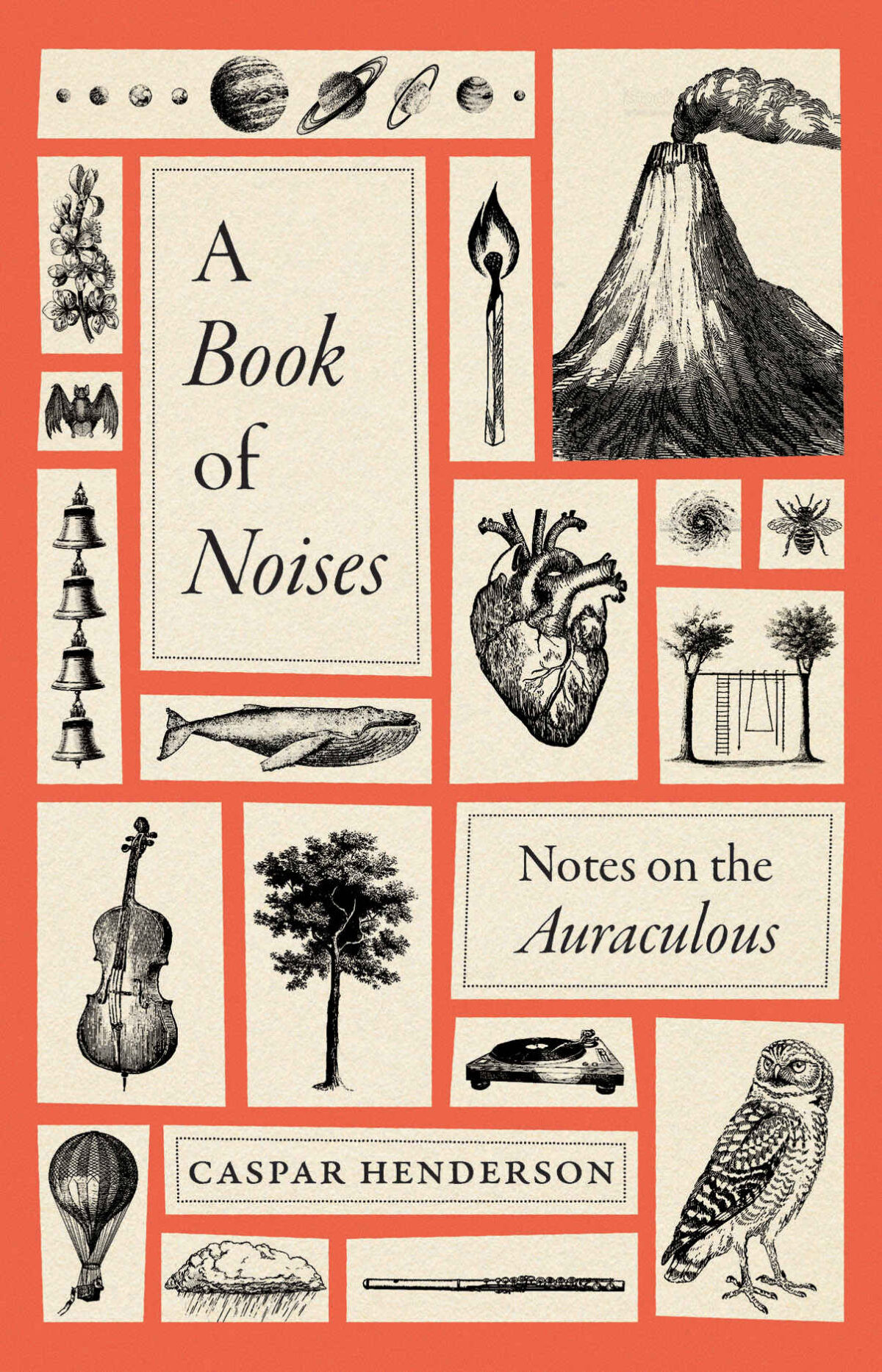Did you know that sperm whales make sounds using “lips” located near their blowholes — and that those sounds are so loud they could burst the eardrums of a human diver at close range? Or that, near the start of the Covid-19 lockdowns in Britain in 2020, residents on newly quiet streets became aware of “noisy lovemaking” by amorous hedgehogs? Or that, according to legend, churchbells in the English coastal town of Dunwich, which largely disappeared into the sea following storm surges in the 14th century, can still be heard when the tide is just right?

BOOK REVIEW — “A Book of Noises: Notes on the Auraculous,” by Caspar Henderson (University of Chicago Press, 272 pages).
Readers of Caspar Henderson’s “A Book of Noises: Notes on the Auraculous” will encounter these factoids, and many more, as the Oxford-based writer and journalist explores the world of sounds, both natural and human-made, in great detail. Admittedly, this is not a new idea; earlier this year, in fact, David George Haskell’s “Sounds Wild and Broken” similarly explored the planet’s many diverse sounds. (In the introduction, Henderson mentions Haskell’s book as one of a handful readers can turn to if they want to learn more.) Even so, Henderson’s book stands out for its breadth, its humor, and especially the author’s passion for the material.
The first thing the reader is likely to notice is that the chapters are many, and short. Each of the 48 chapters averages barely 6 pages; often, the chapter heading is concise and to the point: “Volcano,” “Frog,” Nightingale,” “Bells.” This structure may strike some readers as a bit of a hodgepodge, but the book’s flow follows a certain logic.
We begin with the very first sounds produced in the early universe — there was no one to hear them, of course, but they nonetheless involve us: As Henderson explains, the sound waves that wafted through the universe shortly after the Big Bang could be said to have helped nudge the first galaxies into existence, and with them, eventually, stars and planets.
Eventually life appears, and the middle chunk of the book, exploring animal and then human sounds, follows. Henderson explains that the first sounds produced by land animals occurred some 407 million years ago, though the first “note” known with precision came much later, when a certain type of cricket rubbed its wings together in a particular way, about 165 million years ago. He writes: “The exact pitch — at 6,400 hertz, a little above a G8, or about a fifth above the highest note on a piano — can be deduced from the anatomy of remains preserved in amber.”
Birdsong of the sort heard in today’s feathered creatures came later, around 30 million years ago, when the flowers that many birds rely on as a food source evolved. Soon the hills were alive with the sound of music.
Henderson’s book stands out for its breadth, its humor, and especially the author’s passion for the material.
There’s plenty of popular-science here, most of it quite accessible. But the real draw is not the array of facts but rather the author’s own personal insights, and his ability to bridge seemingly disparate ideas. In a chapter called “Sad Songs,” for example, he writes: “For me almost nothing surpasses the voice of the sea on a pebble beach, and there’s a sense in which the Adagio of Mozart’s Piano Concerto No. 23, in all its simplicity and understatement, says — in six or seven minutes, and without words — almost all that needs to be said about sadness, and beauty.”
Or, in a passage that echoes his earlier discussion of the birth of the universe, he turns to human birth, and the technology that enables the first glimpse of a new life: “It is, truly, an astonishing thing that our first glimpse of the greatest wonder and trial of our lives, parenthood, comes in the form of a fuzzy black and white smudge made from sound.”
Not all sounds are welcome. Noise pollution, ubiquitous in today’s urban realm, is a scourge. Henderson highlights a study that found students’ test scores at a New York City school were worse on the side of the school that faced a noisy railway track — a disparity that went away after measures were taken to soundproof the classrooms. Often, however, the ill-effects of loud noise take place far from human witnesses. He describes, in disturbing detail, the effects of “air guns” used in the search for offshore oil and gas deposits. These blasts of air shoot through the water and into the rock below. Large animals like whales can swim away from the area where the survey is being conducted, but the smaller creatures at the bottom of the food chain cannot.
“It is, truly, an astonishing thing that our first glimpse of the greatest wonder and trial of our lives, parenthood, comes in the form of a fuzzy black and white smudge made from sound.”
Henderson describes a test carried out off Tasmania, in which a single air gun killed all the krill larvae within a kilometer, along with most of the plankton. He writes: “It is thought that sound waves from the blast shook many animals to death, while those which survived the initial shock died soon after because they could no longer hear or feel the world around them.”
On a much more positive note, Henderson explains how hydrophones, which record sound underwater, have been used to let ships avoid whales in the Gulf of St. Lawrence.
While beautiful sounds can delight and loud noises can harm, the absence of sound is a more complex affair, and a chapter titled “Silence,” near the end of the book, is the most philosophical. In fact, total silence is just about impossible to experience, as we bring with us our heartbeats, and the whoosh of blood through our veins, wherever we go. A visit to a sound-free room, known as an anechoic chamber, is said to have inspired John Cage to “compose” his famous 4’33” — in which musicians refrain from making any sounds for four and a half minutes. (Henderson points out that at least six other musicians had created soundless works previously — who knew?)
Silence is inevitably associated with death. “The ultimate destination of both life and art,” Henderson writes, “is oblivion.” We miss the voices of those no longer with us. He tells of the father of one of the victims of the 2015 Paris nightclub attack who kept paying his daughter’s phone bill for years afterward so that he could hear her voicemail greeting.
In the town of Otsuchi, Japan, which was devastated by the 2011 earthquake and tsunami, there’s a disconnected phone known as a “wind phone” in which one can reach out to those who perished.
Silences can be political. Those imposed from above — by authoritarian regimes — are obviously evil; equally problematic, Henderson points out, are the silences we impose from within. He quotes Martin Luther King Jr., who said that, in the end, what will be remembered foremost is “not the words of our enemies but the silence of our friends.”
In less expert hands, a book like this could devolve into a mere list, a kind of encyclopedia of sounds — but Henderson’s artistry, and his enthusiasm for his subject, prevents this from happening. Though neither a scientist nor a professional musician, he engages thoughtfully with the world of sound in all its forms. The result is a remarkably absorbing and often charming work that may leave readers with the urge to tune in to the myriad sounds around them with renewed awareness.










